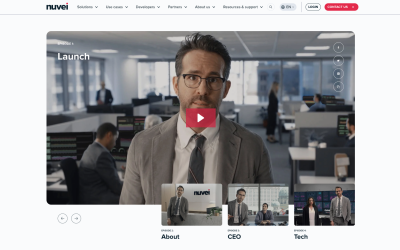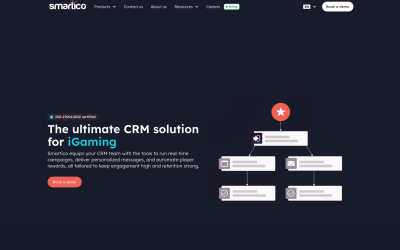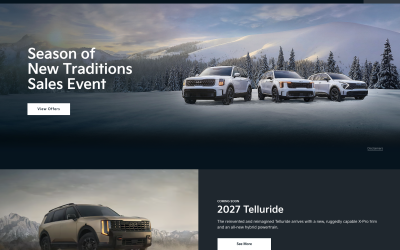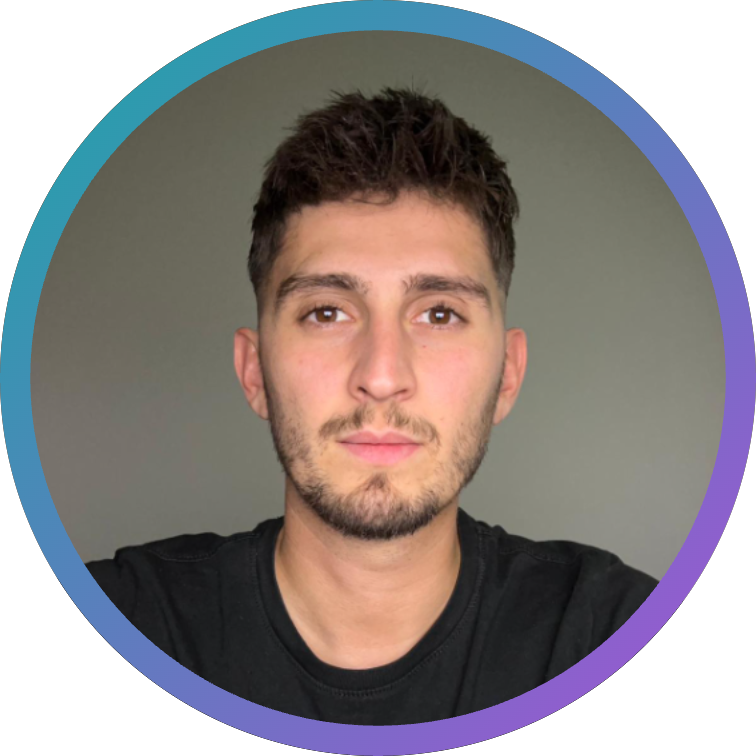In the competitive digital landscape, optimizing website performance is crucial. One such technique, minification, enhances web performance by minimizing the size of source code.
This process, utilizing languages such as HTML, CSS, and JavaScript, improves site speed and crawlability, leading to improved user satisfaction and Google ranking.
This article will delve into the impact of Minification, its role in web development, its comparison with similar techniques, and the tools available for its effective implementation.
Key Takeaways
- Minification is the process of shortening source code to remove unnecessary characters, empty space, comments, delimiters, long-name variables, and other superfluous elements.
- Minification improves both site speed and search robot crawlability.
- Minified code is designed to be understood easily by web browsers, not humans.
- Minification reduces bandwidth use and improves script execution time.
Rankstar – A Valuable SEO Partner for Your Business
→ Explore the world of minification and how it can supercharge your website’s speed and rankings.
Don’t miss out on the opportunity to enhance your SEO game. Read the full article on RankStar and make your website faster and more competitive today!
We are also here to propel your brand to the summit of search rankings, ensuring its outstanding prominence in both Autocomplete Suggestions and Autosuggest Removal when in need.

Understanding Minification
While it may initially appear complex, minification is essentially the process of reducing the size of your source code by eliminating unnecessary elements, thereby enhancing the efficiency of your website.
This process typically targets scripting languages like HTML, CSS, and JavaScript. By stripping out nonessential characters such as white spaces, line breaks, and comments, minification ensures the code remains interpretable by web browsers, but reduces its size significantly.
The overall effect is an increase in site speed and improved crawlability for search robots. Furthermore, it is crucial to distinguish minification from similar processes such as concatenation or compression.
Each of these processes has distinct roles and benefits in web development, however, minification specifically focuses on optimizing code for faster execution and lower bandwidth usage.
Role of Minification in Web Development
Implementing minification in web development proves to be a game-changer by elevating site speed, enhancing user satisfaction, and improving search engine rankings. This process involves eliminating unnecessary elements in the source code, thus resulting in a more efficient and compact file size.
The following table illustrates the significant role of minification in web development:
| Benefits of Minification | Impact of Minification on Web Development |
|---|---|
| Enhanced Site Speed | Faster page load times leading to improved user experience |
| Improved SEO Rankings | Higher visibility on search engines due to faster site speed |
| Reduced Bandwidth Usage | More efficient script execution, leading to cost savings |
Thus, minification emerges as a powerful technique, crucial for optimizing web performance, ensuring user satisfaction, and enhancing a website’s search engine visibility.
Minification Vs Concatenation and Compression
In the realm of web development, it is essential to distinguish between minification, concatenation, and compression, as each contributes uniquely to optimizing website performance.
An impact of minification is eliminating redundant or unnecessary data in the code, reducing file size and thereby increasing speed.
Concatenation, on the other hand, merges multiple files into one, reducing HTTP requests and enhancing load speed.
Compression is another technique to shrink file size without losing data quality, often used in conjunction with minification and concatenation.
While minification focuses on code readability for machines, compression prioritizes data transmission efficiency.
Each method has unique benefits and appropriate use cases, with the choice largely depending on the specific needs and architecture of the website.
Tools for Effective Minification
Choosing the right tools for minification is a critical step in enhancing website performance and speed. It’s not only about reducing file size, but also about optimizing load times and improving user experience. There are several tools and resources available for effective impact of minification, each with its own benefits and limitations.
- UglifyJS: A powerful JavaScript minifier that allows you to parse, compress, mangle, and beautify your code.
- CSSNano: A modular, modern CSS compressor that uses PostCSS to minify CSS.
- HTMLMinifier: A highly configurable, well-tested, JavaScript-based HTML minifier.
- Closure Compiler: Offered by Google, this tool optimizes and compiles JavaScript, enhancing its performance and reducing its size.
Analyzing the needs of your project and understanding the features of these tools will assist in making the appropriate selection.
Benefits of Using Content Delivery Networks
Leveraging a Content Delivery Network (CDN) can provide numerous benefits for website speed and performance optimization through efficient minification processes. CDNs enable the distribution of service spatially relative to end-users to provide high availability and performance. They are networks of servers that work together to deliver internet content, including HTML pages, JavaScript files, stylesheets, images, and videos.
| Benefits of CDN | Description |
|---|---|
| Improved Loading Times | CDNs distribute content to servers located near the user’s geographical location, reducing the time taken to load a webpage. |
| Reduced Bandwidth Costs | Efficient caching and other optimizations mean fewer data transfers, reducing overall hosting costs. |
| Increased Content Availability and Redundancy | CDNs can handle more traffic and withstand hardware failure better than traditional hosting setups. |
Impact of Minification on SEO
Minification significantly boosts a website’s search engine optimization (SEO) by speeding up load times and enhancing the crawlability for search engine bots. It not only improves the website’s overall performance but also impacts its visibility on search engines.
- Faster Page Load Times: By reducing the file sizes of HTML, CSS, and JavaScript files, minification decreases the time it takes for a page to load. Faster load times lead to improved user experience, which is a factor in Google’s ranking algorithm.
- Improved Crawlability: Minified code is easier for search engine bots to crawl, leading to better indexation.
- Reduced Bandwidth: Another impact of minification is reducing bandwidth usage, further improving site speed and performance.
- SEO Ranking: As page load time is a ranking factor in Google’s algorithm, minification indirectly boosts SEO rankings.
Efficiency of Minified Code
The process of minifying code significantly enhances the efficiency of a website’s performance. By eliminating unnecessary characters, whitespace, and comments, the file size of the website’s code is reduced. This leads to faster loading times and a smoother user experience.
Moreover, minification improves script execution time, as there is less code for the browser to process. This not only benefits user experience but also positively impacts SEO, as Google considers site speed in their ranking algorithms.
Furthermore, minified code reduces bandwidth usage, which is beneficial for both users with data limits and for site owners on metered hosting plans.
Minification and User Experience
Often, by enhancing site speed through the impact of minification, a significantly improved user experience is achieved. This improvement is primarily due to the reduced loading time, resulting in a more fluid navigation and interaction for users. The direct relationship between site speed and user satisfaction is well-documented, with users increasingly expecting near-instantaneous response times.
- Decreased Bounce Rates: Users are less likely to leave a site that loads quickly, reducing bounce rates.
- Improved User Engagement: Faster load times can increase the time users spend on a site and their engagement with the content.
- Increased Conversions: A smooth, fast user experience can lead to higher conversion rates.
- Enhanced SEO: Google uses site speed as a ranking factor, so faster sites are likely to rank higher in search engine results.
Frequently Asked Questions
What Are Some Potential Downsides or Challenges of Minification in the Context of Web Development?
Minification, while beneficial for website speed and SEO, can present challenges such as reduced readability of code, potential for coding errors during the process, and difficulties in debugging due to the removal of comments and formatting.
Can the Minification Process Lead to Any Errors or Bugs in the Code Functionality?
Yes, the impact of minification can potentially lead to errors or bugs in code functionality. These issues may arise due to the removal of necessary characters or syntax errors introduced during the minification process. Proper testing can mitigate this risk.
How Often Should the Minification Process Be Carried Out During the Lifecycle of a Website or Application?
The minification process should be implemented throughout the development lifecycle of a website or application. It is especially crucial during updates or addition of new code, to ensure optimal speed and efficient performance.
Are There Any Specific Considerations or Best Practices When Minifying CSS and Javascript?
When minifying CSS and JavaScript, it’s crucial to ensure functional integrity. Utilize reliable minification tools, verify the output, and be mindful of potential issues with variable hoisting and semi-colon insertion in JavaScript.
How Can Beginners to Web Development Learn and Implement the Process of Minification Effectively?
Beginners in web development can effectively learn and implement minification by understanding its basics, practicing on simple code, using online tools, and integrating minification into their development environments or utilizing Content Delivery Networks.
Conclusion
In conclusion, the impact of minification plays a critical role in web development, enhancing website performance by reducing source code size. It offers distinct advantages over concatenation and compression.
When implemented with tools like CDNs, minification significantly boosts site speed and visibility.
The relationship between minification, SEO, and user experience is undeniable. Leveraging this technique is crucial for website developers to achieve superior performance and user satisfaction.



































